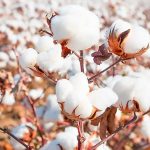The Australian Wool Production Forecasting Committee released its updated forecast of shorn wool production for 2020/21 on 14th August 2020. The Committee now predicts that shorn wool production in 2020/21 will be 280 mkg greasy. This is a decline of just 1.1% on the 283 mkg greasy produced in 2019/20 and comes after the 5.5% fall in 2019/20 compared with 2018/19. This updated forecast is an improvement on the Committee’s April forecast for 2020/21 of 276 mkg. The Committee expects the small decline in shorn wool production despite the much better seasonal conditions throughout much of New South Wales, Victoria, Tasmania, and the south-east of South Australia. The main driver for the decline in shorn wool production is a lower number of sheep shorn combined with the residual effects of the drought in the first part of the season and continued dry conditions in Western Australia, central Queensland and in the pastoral regions of South Australia.
- The Australian Wool Production Forecasting Committee’s second forecast of shorn wool production in 2020/21 is 280 mkg greasy, down 1.1% on 2019/20. The season has significantly improved over the last few months in many wool growing regions, compared with the previous year or more. This is offset by lower sheep shorn numbers in all states except Victoria and Tasmania and continuing dry to drought conditions in Western Australia, central Queensland and the pastoral region of South Australia.
- The Committee estimates that Australian shorn wool production for 2019/20 was 283 mkg greasy, a 5.5% decline on the 300 mkg total for 2018/19 and reflects the sustained dry and drought conditions across large parts of the country last season.
The Australian Wool Production Forecasting Committee (AWPFC) has updated its forecast of shorn wool production for the 2020/21 season. This second forecast is for production of 280 million kilograms (mkg) greasy, a 1.1% decline on the 2019/20 estimated production of 283 mkg greasy, but an upward revision from the 276 mkg forecast in April.
Committee Chairman, Russell Pattinson said that “Welcome rainfall through much of NSW, Victoria, Tasmania and southern Queensland in recent months stimulated pasture growth and replenished on-farm water supplies. This is tempered by persistent dry conditions in much of Western Australia, the pastoral region of South Australia and central Queensland”.
“Despite encouraging rainfall in some areas, the effect of the prolonged drought on wool production in 2019 and early in 2020 will, in part, carry forward into the 2020/21 season”.
Sheep and lamb turn off data from the Australian Bureau of Statistics to the end of June 2020 show a 10% decrease in total turnoff compared with the previous season as producers in some regions of the country seek to rebuild their flocks. This is supported by results from the June 2020 AWI/MLA Wool and Sheepmeat survey which found that more than 40% of producers intend to increase breeding ewe numbers, compared with 28% of producers in 2019/20.
The Committee noted the substantial transfer of ewes and lambs from Western Australia to southern and eastern states during the first 6 months of 2020.
The number of sheep shorn (estimated to be down by 5.2%) remains a key factor limiting recovery in shorn wool production in the short term, particularly in Western Australia and NSW, despite a gradual increase in annual average cut per head (up 2.9%) as a result of improved seasonal conditions in many wool growing regions.
The Committee estimates shorn wool production for the 2019/20 season at 283 mkg greasy, a 5.5% decline on 300 mkg greasy for the 2018/19 season. AWTA test data showed that the average yield ended the 2019/20 season at 62.2%, down 0.9% on 2018/19, mean fibre diameter was unchanged at 20.5 microns while staple length increased by 2 mm to 85.6 mm as producers moved away from shorter shearing intervals (e.g. every 6-months) back to shearing every 8- or 12-months.
| Parameter | 2018/19 Final Estimate |
2019/20 Final Estimate |
Change y-o-y (%) |
2020/21 ThirdForecast |
Change y-o-y (%) |
| Sheep numbers shorn (million head) |
72.5 | 68.4 | -5.7% | 65.0 | -5.2% |
| Average cut per head (kg/head) |
4.13 | 4.14 | +0.2% | 4.26 | +2.9% |
| Shorn wool production (mkg greasy) |
300 | 283 | -5.5% | 280 | -1.1% |
| Note: Totals may not add due to rounding. | |||||
| mkg greasy | NSW | VIC | WA | SA | TAS | QLD | NATIONAL |
| 2018/19 Final Estimate (mkg) | 99.1 | 66.9 | 62.2 | 54.3 | 9.0 | 8.1 | 300 |
| 2019/20 First Estimate(mkg) | 94.3 | 63.2 | 59.8 | 50.0 | 8.4 | 7.5 | 283 |
| Change y-o-y % | -4.8% | -5.5% | -3.9% | -7.9% | -6.7% | -7.4% | -5.5% |
| 2019/20 Second Forecast (mkg) | 92.1 | 67.3 | 55.0 | 49.5 | 9.0 | 6.7 | 280 |
| Change y-o-y % | -2.3% | +6.5% | -8.0% | -1.0% | +0.6% | -10.7% | -1.1% |
| Note: Totals may not add due to rounding. | |||||||
The state and national Committees will next meet in mid-December 2020.
Source: The National Council of Wool Selling Brokers of Australia (NCWSBA)
Also read: Economies starting to recover in key wool consuming countries





